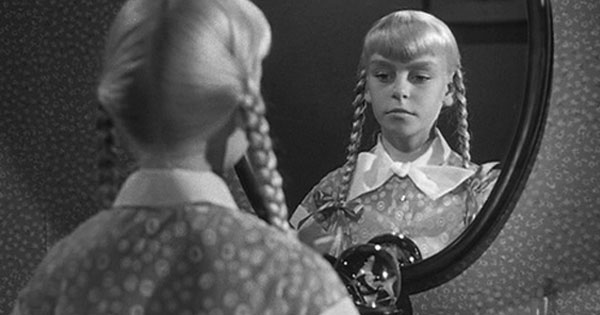
I occasionally lead architectural walking tours of the French Quarter as a volunteer for a local nonprofit. To get my guide license, I was fingerprinted by Homeland Security, I peed in a cup, I took a history test. New Orleans is very serious about ensuring its guides are not infiltrated by cracked-head terrorists who traffic in shoddy information about beignets.
During my tours, I almost always stop in front of an unassuming Creole cottage at 613-15 Dumaine St. The graceful, simple, four-door façade has remained virtually unchanged since it was built in the 1820s, which itself is pretty cool. But that’s not why I stop. I stop because here I like to ask the group, “Has anyone read the book or seen the movie The Bad Seed?”
The answer is invariably “no.” In fact, I can remember each and every time someone said “Yes!” because those who knew of it always appended a verbal exclamation point.
It was the last book written by William March, the pen name of William Edward Campbell. It was published in 1954; March lived at this house on Dumaine when he wrote it. The book became a hit, was made into a play and, in 1956, a popular movie directed by Mervyn LeRoy.
If you aren’t familiar with it, The Bad Seed is about an eight-year-old girl named Rhoda Penmark, who is outwardly all pigtails and bubbly cheer. It turns out, she’s a sociopath who remorselessly and secretly murders a classmate who bested her in a penmanship competition. She has also likely killed two adults.
The book offers a fairly simplistic view of inherited traits (Rhoda’s birth mother, it turns out, was also a murderer). But it’s been hailed as a dark, modern take on youth—a rejection of the Victorian ideal of childhood as an age of innocence. (It follows on Agatha Christie’s 1949 Crooked House, which also featured a child killer, and was published the same year as Lord of the Flies.)
March was a son of the South—he was born in Alabama in 1893, and shipped out and served on the front lines in France during World War I. Wounded in combat, he was recognized for his valor and after the war became an executive at a steamship line. In 1933 he published Company K, an extraordinary and inventive novel about the war that in many ways was just as dark as The Bad Seed. (An editor-curated collection by The American Scholar published earlier this year included Company K in its list of “Ten Neglected Classics.”) Each short chapter of Company K is told by one of 113 Marines. Some are heroes, some cowards, some delusional, some gimlet-eyed. Some kill Germans who are on their knees with hands raised; others are killed by Germans. They’re victims of mustard gas and mortars, of their own fears and yearnings. It’s war reduced to pixels. The critic Christopher Morley wrote that “it’s a book of extra-ordinary courage—not the courage of hope but the quiet courage of despair.”
My tour stop in front of March’s house involves a poignancy that quickly dashes exclamation points, since I report that March moved here after what was then called a “nervous breakdown.” And he died of a heart attack in this house in 1954 at age 60, just a month after The Bad Seed was published.
It was his only commercially successful novel. March’s house was auctioned off a year after he died, and the newspaper ads touted it as the “former residence of William March, famous author and art collector.” The ad failed to note that he was mostly famous in death.
I stop here on the tour here because anybody who’s read The Bad Seed will want to see where it was written. If the group looks at me blankly when I bring it up, I swiftly move on. It’s probably better to send visitors to the National WWII Museum to learn about war (it’s also a great repository of pixilated stories, not just armaments). And at some point I’ll mention another local author who was famous for dying before fame—John Kennedy Toole, whose novel The Confederacy of Dunces (1980) was published 11 years after he took his own life.
What’s more, I probably don’t need to bring up the subject of juvenile murderers, of which New Orleans has no dearth, sadly. Those visiting the city and curious about architecture and the stories behind it don’t want to hear much about that.
So I lead the group up the block to a handsome early home called Madam John’s Legacy, which was named after a short story set here by George Washington Cable. He’s another ghost of the French Quarter, a popular local author who was famous at the turn of the last century before lapsing into obscurity. Few today have ever heard of him.

